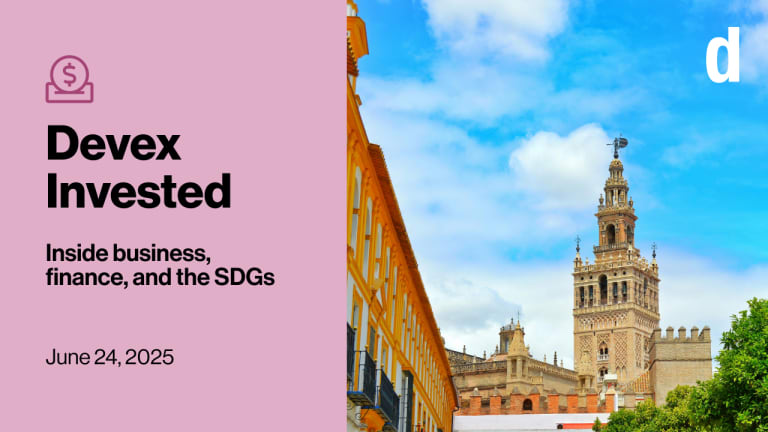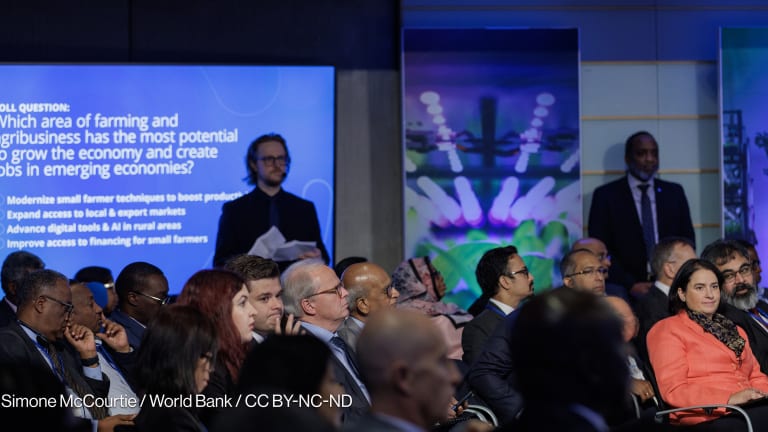
As the international community seeks to build momentum behind the ambitious Sustainable Development Goals, the question of how to fund them is a priority for everyone. With the current funding gap estimated to be anywhere from $2-4 trillion per year until 2030, it is easy to see why. A new approach is needed to help us meet our ambitions: an approach that is inspiring, yet grounded in pragmatism, an approach reflecting the universality of the SDG agenda, where everyone has a part to play and is motivated to act.
This brings us to “global public investment”: a new, simple and much-needed big idea that has the potential to revolutionize concessional international public finance intended for sustainable development. This new funding mechanism is universal — any country can contribute to it and any country can benefit from it.
GPI is an investment in our global common good, reflecting the ideals of the SDGs. This idea originates from work by the Joep Lange Institute, supported by the Global Fund Advocates Network and International Civil Society Support — who have organized many consultations over the past two years. It is backed by senior figures, including Helen Clark, former prime minister of New Zealand and administrator of the U.N. Development Programme.
Eliminating $1.90-a-day poverty should be our basic minimum standard.
—Embracing GPI will ensure sustained investment in things that matter to the world, helping us overcome such global challenges as dealing with growing inequality in our countries, managing climate change and reversing the malnutrition burden affecting all countries.
Getting there requires five achievable shifts. Some are underway, while others need greater impetus; all require a new mindset from that of the past. Collectively, these shifts set out a new approach that gives us the best chance of financing the SDGs.
5 shifts to deliver a vision of GPI
1. From reducing poverty to reducing inequality
Development finance institutions grapple with their growing role
Development finance institutions' spending has doubled in the past five years and as they play a greater role in global development, they are also facing greater scrutiny.
Dealing with extreme poverty is just the first stage of development; tackling inequality and ensuring everyone can access higher living standards enjoyed in the richest countries is the next step.
Right now, inequality within countries is increasing — this also threatens political stability, as people feel they are being left behind while other groups benefit from increased wealth. The income gap between the poorest 20% of the global population and the rest has widened over the past 20 years. Eliminating $1.90-a-day poverty should be our basic minimum standard. Supporting sustainable development on a continual upward trajectory for all people should be the ambition now.
2. From overall quantity to the unique characteristics of financing
Unlike the conventional logic of aid — that it is, something all countries will eventually “graduate” from — GPI should become a permanent fixture on the financing landscape.
It focuses on the range of often interconnected sources, types, and modalities of funding and finance at our disposal. Each has its own incentive and comparative advantage to help overcome traps and promote global benefits. Strengthening complementarity and building synergies between types of financing is as important as ensuring sufficient overall volumes. GPI provides a coherent framework to facilitate this.
3. From ‘north-south’ to universal
The arrival of “emerging donors” is shaking up international development for the better. South–south cooperation and official development assistance from other government providers have increased significantly since 2000, and stand at over $25 billion, according to available data. While wealthy countries must be held to their historic redistributive role, GPI is about contributions from all countries, according to ability.
4. From closed to accountable governance
Recognizing the changing financing landscape requires governance mechanisms to evolve and improve transparency and accountability. GPI is about creating an orderly process, so contributions can be managed multilaterally in a more democratic fashion and supported by civil society. This is critical when financing data is often lacking, which prevents effective targeting of resources to where the need is greatest and hinders impact assessments that are vital for learning and accountability.
5. From a foreign to global positioning
A new vision must be accompanied by a more appropriate narrative and language. GPI is an investment in our global common good rather than traditional ideas such as “aid” or “southern cooperation,” which is seen as a one-way investment to foreign countries.
Making GPI a reality
These shifts won’t happen overnight — GPI embraces changes in financing already underway and will help guide them towards universal ambitions for a better world. We know GPI investments can work. At a regional level, it is already working.
The European Union is perhaps the world’s most advanced regional grouping in terms of bureaucratic complexity and shared political-economic ambition. It has been a pioneer in regional public investment and has accomplished most of the shifts outlined above. The EU began with a set of visionary leaders with shared aims of peace and prosperity for all. There is a clear parallel here — the SDGs have been set out by equally visionary leaders across the world with shared noble ambitions. We now need to take the next step.
The international community needs to break out of its comfort zone and transform financing. Current aid models, including those that leverage the private sector, will not live up to the needs and promise of the SDGs. The job of the international development community is not, as is sometimes said, to do itself out of a job. This is not the beginning of the end for concessional international public finance; rather it is the end of the beginning.
GPI must play a pivotal role for us to attain success and it is time to embrace it. To find out more and join our efforts, contact Jonathan Glennie, senior fellow at the Joep Lange Institute, via info@joeplangeinstitute.org.









